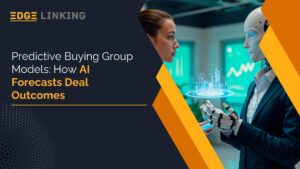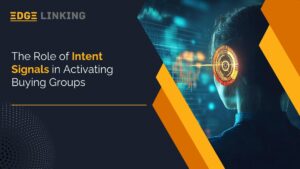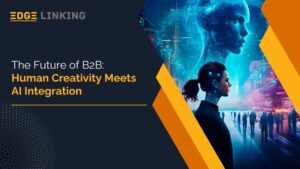With AI-in-everything being the norm these days, marketing automation has evolved from taskmaster to master strategist. While 2024 was about keeping pace with customer expectations, 2025 is about being three steps ahead with the aid of some pretty intelligent (and increasingly sympathetic) machines.
Marketing automation these days is not merely about time-saving or automating dull, repeat tasks. It’s about developing marketing that thinks, learns, and—dare we say it—feels. The trends redefining this space in 2025 are not merely smart—they’re changing the definition of engaging with customers in real-time, at scale, and with authentic relevance.
Let’s deconstruct the trends re-writing the rulebook.
1. Personalization Comes of Age: From “Hey [FirstName]” to Mind-Reader Mode
Let’s be real putting a first name on an email ceased to be personal in 2015. Today, in 2025, AI-based personalization is leveraging real-time context. We’re discussing weather-conditioned content, mood-sensitizing emails, and product suggestions that are uncannily spot-on but without descending into creepiness.
Thanks to machine learning algorithms that get behavioral subtlety, solutions such as Salesforce and Adobe Sensei are designing experiences that truly resonate with the user in the instant. No more one-size-fits-all emails. Just precision messaging that meets customers where they are—mentally, emotionally, and digitally.
Quick Stat: McKinsey estimates that brands that are getting personalization right are bringing in 40% more revenue than their less-agile competitors. The stats don’t lie.
2. Predictive Analytics: Your Marketing Crystal Ball
Who needs a crystal ball when you have predictive analytics on steroids with machine learning? In 2025, great marketers aren’t just responding to clicks—they’re forecasting them.
From predicting churn to recognizing high-lifetime-value customers, AI is revolutionizing marketing from a game of guesswork into a data-driven science. You can now have tools such as HubSpot’s Predictive Lead Scoring or Marketo Engage tell you which leads to pursue, what to serve them in terms of content, and the precise moment to strike.
Real-Life Victory: E-commerce sites are employing this technology to dynamically change prices, offer timing, and even discount levels—all based on the individual user’s behavior profile.
3. Zero-Party Data: The New Gold Standard
Cookies are crumbling, and marketers are slowly waking up to zero-party data’s potential—the type customers willingly surrender. Consider quizzes, polls, and interactive preference centers that double as a purpose: improved user experiences, richer marketer data.
Why is this a big deal in 2025? Because zero-party data brings back the one thing marketing automation tends to forget: trust. And in an era where privacy isn’t just a worry but a priority, brands that ask rather than assume are the ones customers remember.
4. Content Automation: More Brains, Less Burnout
Remember when having to make five versions of a landing page used up an entire weekend? Those days are over. Thanks to the advent of smart content automation, marketing teams are creating dozens of highly individualized content variations—without exhausting themselves.
Generative AI is now integrated into most automation platforms, examining what kind of content works with every micro-segment. It’s not merely spewing out copy—it’s creating strategic storytelling in your voice, style, and tone.
Perspective shift: Content automation isn’t here to replace creativity. It’s here to scale it.
5. Omnichannel Automation, Finally Without the Chaos
Once upon a time, omnichannel marketing was a buzzword that usually led to brand confusion. Not anymore. In 2025, automation platforms are finally orchestrating a seamless experience across email, web, SMS, social, and even chat—all in real time.
No more “wait, didn’t I already receive this message?” anymore. Customers receive relevant, consistent messaging about intent clusters, not channels.
What this means: If your prospect’s path begins with a webinar and concludes on Instagram, the messaging fits – not repeats.
6. Marketing + Sales Automation = Power Couple
Let’s be real: sales and marketing haven’t always been best friends. But automation is making this historic feud a real-time synergy in 2025.
Revenue teams are now connected by aligned CDPs, harmonized KPIs, and automated processes. When a lead views 75% of a demo or downloads a critical whitepaper, the system notifies the sales rep in real time—along with a recommended follow-up script.
Result: Speedier response, warmer leads, and fewer finger-pointing meetings.
7. Ethics Isn’t Optional Anymore
AI may be at the helm, but people are still keeping it in check. Responsible marketing automation is as crucial in 2025 as successful automation.
From debiasing advertising targeting to creating inclusive language models, brands are being held to a higher standard—and rightly so. With great power comes the expectation of transparency.
Watch This Space: Unilever is already at the forefront with AI governance models that track, audit, and enhance automation practices. Ethical marketing is no longer a “nice-to-have.” It’s a mandate.
8. No-Code Tools: Automation Without the IT Waitlist
Developers, take a sigh of relief—marketers are taking more tech in-house themselves these days, thanks to an influx of user-friendly no-code and low-code automation solutions. With tools like Make.com, ActiveCampaign, and Zapier providing visual workflows, marketers are deploying advanced campaigns without ever having to write a line of code.
Why it works: Speed. Agility. Experimentation. You can try new concepts in hours, not weeks, and adapt based on feedback in real-time.
9. Emotional Intelligence Gets Automated
Yes, you heard it here. 2025 is when marketing automation becomes emotionally intelligent—not in the sense of a tearjerker movie, but in being able to know the room.
Advanced sentiment analysis can now sense frustration, excitement, or uncertainty in behavior, voice, and message. Your chatbot is aware of when to escalate to a human. Your emails tone is adjusted based on current user activity. And your remarketing efforts are aware of when to back down versus pushing further.
What’s next? Marketing automation that does more than merely talk—it listens.
10. Real-Time AR + Automation = Immersive Marketing
Augmented Reality was once flashy, futuristic, and exclusive to gaming or high-end brands. Today it’s functional, customized, and automated.
Beauty, fashion, and even home decor brands are pairing AR with marketing automation to deliver customized, interactive experiences that adjust in real time. Imagine it as window shopping—except smarter, quicker, and on your phone.
Example: L’Oréal’s AR experiences now recommend shades and skincare based on user history, current mood, and facial analysis—automatically.
Final Thoughts: Automation Isn’t Just Smarter. It’s Wiser.
What makes 2025’s marketing automation so exciting isn’t the shiny tools. It’s the shift in mindset. We’re no longer automating just to save time—we’re automating to elevate strategy, enhance creativity, and deepen human connection.
Today’s automation is thoughtful. Predictive. Ethical. Sometimes even emotional. It’s enabling brands to move from impersonal mass messaging to curated, contextual conversations—at scale.
So, what’s the takeaway?
The brands leading in 2025 aren’t those with the flashiest automation platforms. They’re the ones using automation with precision, empathy, and purpose.
And that? That’s the real trend worth following.






